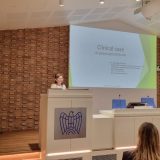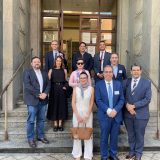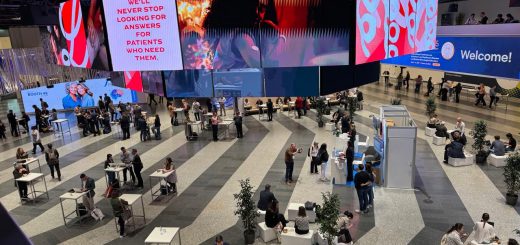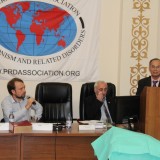KazNMU Represented at the International Course on ATTR Amyloidosis in Italy
On May 14–15, 2025, a major event of high clinical significance and international scale took place at the Amyloidosis Research and Treatment Center of the IRCCS Policlinico San Matteo Foundation in Pavia, Italy. The event focused on improving the identification and management of ATTR amyloidosis and was titled “Diagnostic Strategies in Amyloidosis in the Era of Therapeutic Innovations.”
Neurologists and cardiologists from various countries—including Brazil, Mexico, Argentina, Saudi Arabia, the United Arab Emirates, Italy, Kazakhstan, and others—participated in the meeting.
The Amyloidosis Research and Treatment Center was established in 1986 by Professor Giampaolo Merlini at the University Hospital San Matteo in Pavia. The center registers around 350 new cases and conducts 4,000 clinical evaluations annually. The event’s speakers included highly qualified professors and clinicians from the center, with extensive experience in managing this rare disease.
The increasing availability of innovative treatments for systemic amyloidosis, particularly hereditary transthyretin amyloidosis (hATTR), has sparked growing interest in these rare conditions. At the same time, the development of non-invasive diagnostic methods has facilitated earlier recognition. Neurological involvement plays a key diagnostic and prognostic role. Neurologists are vital in early disease recognition, differential diagnosis, and determining the appropriate therapeutic strategy.
This in-person course was designed for specialist physicians from various countries and aimed to provide valuable information to support clinical suspicion, guide the diagnostic process, and help direct patients toward the most appropriate and personalized therapeutic path.
Plenary presentations were followed by interactive sessions at the Amyloidosis Center, where participants became familiar with diagnostic methodologies, observed the clinicians at work, took part in patient examinations, saw the interdisciplinary approach in action, and engaged in discussions on unresolved aspects of classification and treatment of these complex pathologies.
One session was dedicated to the discussion of clinical cases presented by the participants, which formed an integral part of the program. Each participant prepared a brief clinical case to share experiences from their respective countries. Discussions covered monitoring of carriers for early-stage disease detection, common mutations in the population, appropriate tests and monitoring frequencies, initiation and types of therapy available in different countries, as well as monitoring therapeutic response, types of tests used, frequency of repeat testing, criteria for changing therapy, and commonly used medications.
Kazakhstan was represented solely by Associate Professor Elmira Balabekovna Atantaeva from the Department of Neurology at S.D. Asfendiyarov KazNMU. She gave a presentation on the current state of this disease in Kazakhstan and shared a clinical case. Thanks to increased awareness efforts by the Department of Neurology, the first patient with a confirmed diagnosis of ATTR-PN was identified in the country. A clinical protocol for this condition was prepared and submitted for review to the National Center for Public Health of the Republic of Kazakhstan in February 2025. The Expert Council on Adult Neurology also initiated a proposal to include this disease on the list of recognized orphan diseases.
Events of this kind hold great clinical significance in improving care for patients with rare, severe, and aggressive diseases. Global experience and international collaboration can significantly enhance early detection and timely targeted treatment of orphan diseases, particularly ATTR.














